Yellow flowers: 16 pretty picks for brightening your backyard
These yellow flowers will bring instant sunshine to your outdoor space


In the garden, yellow flowers are often eschewed because the bright color can dominate the scene. But used well, they are indispensable for their joyful glow. Yellow also has a relaxing quality to it: the honey, ochre, and primrose corners of its palette, especially, exude mellow warmth.
If you're unsure about adding this shade to your flowerbed ideas – perhaps the brighter end of the spectrum seems too brash – opt for softer custard tones or rich, rusty golds for an opulent feel. Whether sun-bright or flaxen blonde, whatever sort of yellow you choose, it is sure to lift the border and your spirits.
Add a sense of cheer to your plot with these 16 yellow flowers
Here are our top yellow flowers for you to try in your garden.
1. Helenium 'Riverton Beauty'

- Hardiness: USDA 3-8 (UK H7)
- Height: 4ft (1.2m)
- Best for: wildlife
This sneezeweed has bright banana-yellow flowers with brown cones from July into September. It's an excellent addition if you're looking for wildlife garden ideas, as bees and butterflies adore it.
This perennial likes moisture-retentive, well-drained soil, and plenty of sunshine. Deadheading will help to encourage more blooms. You can also lift and divide the plant every few years, in autumn or spring, to keep it healthy and flowering strongly.
Combine with Eupatorium dubium 'Little Joe', Deschampsia cespitosa 'Goldschleier', and Veronicastrum virginicum 'Lavendelturm' for a spectacular show.
2. Rosa 'The Poet's Wife'
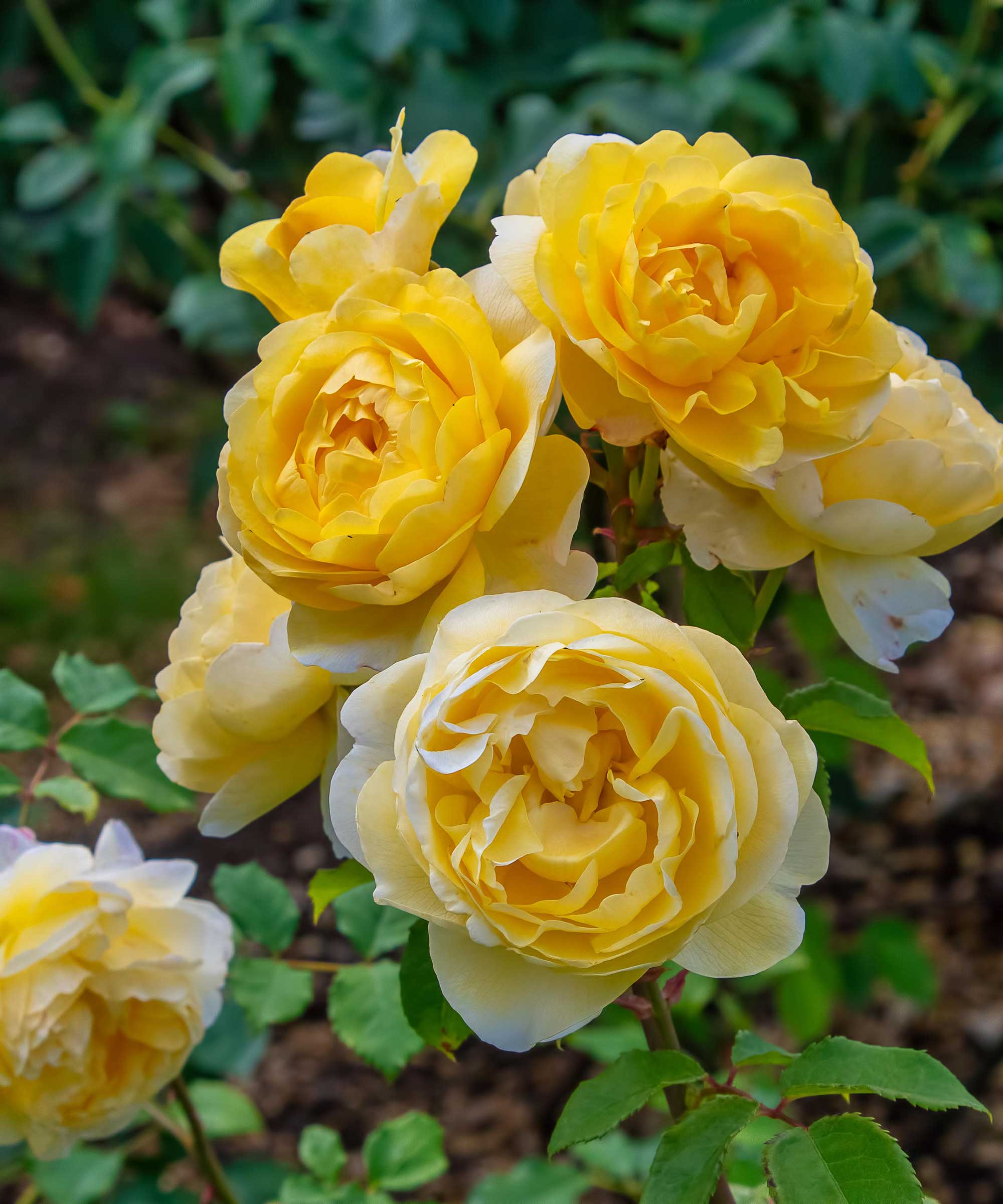
- Hardiness: USDA 5-9 (UK H6)
- Height: 3.5ft (1m)
- Best for: mid border
This cheering English shrub rose, bred by David Austin, has generous yellow flowers that pale as they mature. Plus, it exudes a strong and delicious citrus scent.
Learning how to grow roses isn't too tricky. Plant this one in fertile, humus-rich, well-drained soil in full sun. It can also be grown in semi-shade, but it won't flower as well. Deadheading will encourage more flowers. Prune in February or March, and mulch and feed annually.
It looks particularly striking when accompanied by Salvia nemorosa 'Caradonna', Cistus x pulverulentus 'Sunset', and Digitalis purpurea 'Sutton's Apricot'.
3. Yellow Meadow Rue
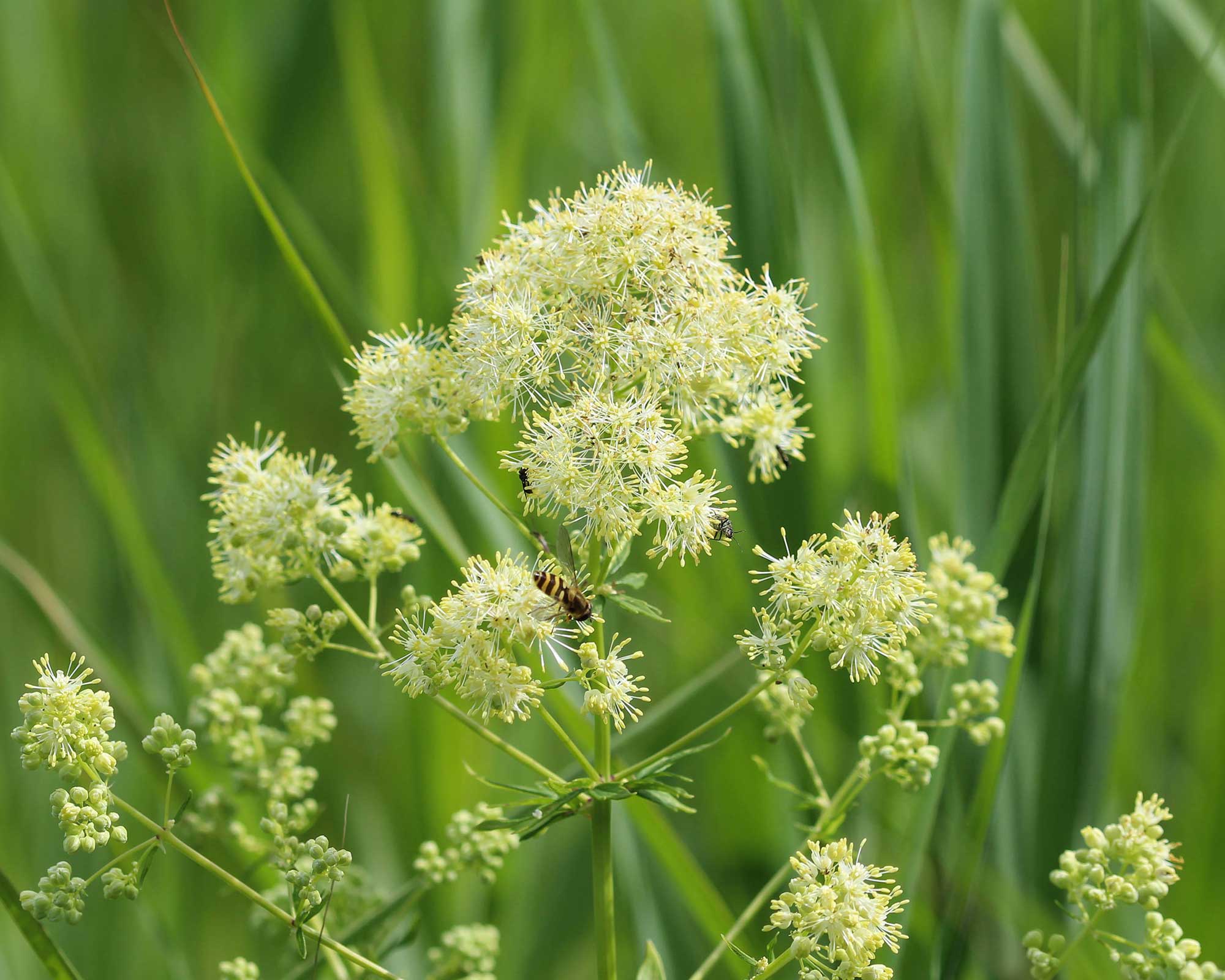
- Hardiness: USDA 5-8 (UK H7)
- Height: 5ft (1.5m)
- Best for: back of border
Otherwise known as Thalictrum flavum subsp. glaucum, the yellow meadow rue is a tall, elegant perennial with fluffy soft-yellow flowers that are visited by bees in midsummer, above attractive glaucous foliage.
It will thrive in moisture-retentive soil in semi-shade. It can also be grown in full sun, but the soil must remain moist in summer heat. As it grows tall, it may need staking in an open site. Once it's finished flowering, cut it back.
Pair with types of ornamental grass, such as Calamagrostis x acutiflora 'Avalanche' and Miscanthus sinensis 'Morning Light', for an ethereal scheme.
4. Helianthus 'Lemon Queen'

- Hardiness: USDA 4-9 (UK H4)
- Height: 6ft (1.8m)
- Best for: back of border
Even determined sunflower haters will find it hard not to love this perennial, which produces small lemon-yellow daisies in August and September.
Plant these beauties in well-drained, humus-rich, neutral to alkaline soil in full sun. They may need staking in an exposed site. Cut back after flowering and mulch annually. You can learn more about how to grow sunflowers in our guide.
They look especially lovely alongside Miscanthus sinensis 'Silberfeder', Eupatorium maculatum 'Riesenschirm', and the bright purple blooms of Verbena bonariensis.
5. Yellow daylily

- Hardiness: USDA 4-10 (UK H6)
- Height: 2.5ft (75cm)
- Best for: mid border
The sweetly-scented, canary-yellow trumpets of this charming old daylily (Hemerocallis lilioasphodelus) are produced throughout June and July. The strappy green leaves are evergreen in warm climates.
Grab your best secateurs and deadhead to keep this perennial tidy and encourage more flowers; when each stem has flowered, cut it off. Plant in moisture-retentive, well-drained soil in full sun.
Good planting partners for this one include Geranium 'Rozanne', Astrantia major 'Claret', and Centaurea montana – all gorgeous choices for cottage garden ideas.
6. Rudbeckia triloba

- Hardiness: USDA 4-8 (UK H6)
- Height: 3ft (90cm)
- Best for: mid border
Brown-eyed Susan is a native US prairie perennial that has small golden daisies with black centers, on branched stems, from August to October. It's very fashionable in current garden trends.
Being short-lived, it will need replacing every few years, but its beauty is well worth the investment. Plant it somewhere with lots of sun, in moisture-retentive, well-drained soil.
It works well alongside Stipa ichu, Calamagrostis brachytricha, and Symphyotrichum 'Coombe Fishacre'.
7. Helianthemum 'Wisley Primrose'
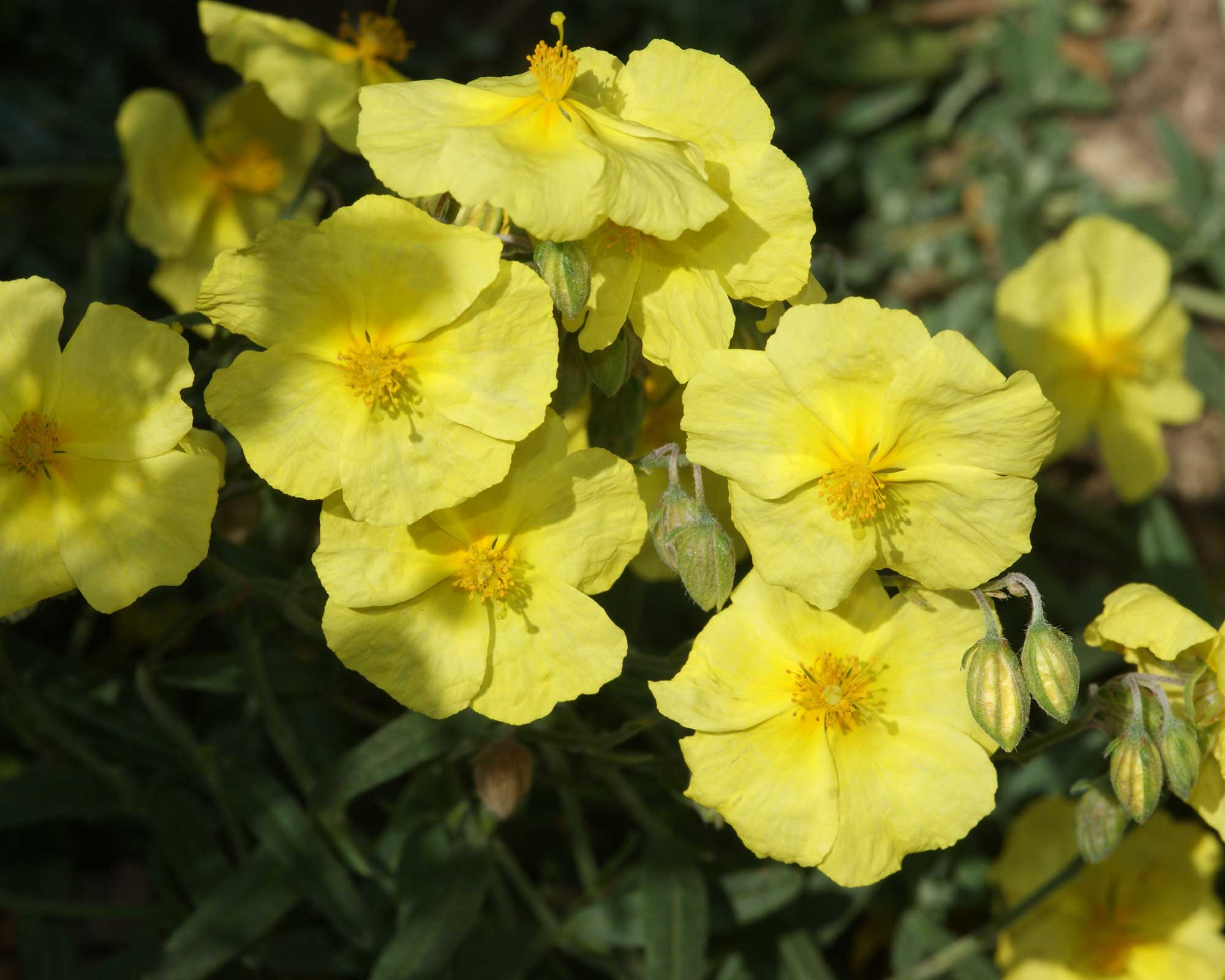
- Hardiness: USDA 5-9 (UK H4)
- Height: 1ft (30cm)
- Best for: front of border
This lovely rockrose is a small shrub that produces custard-yellow flowers above gray evergreen foliage from May to July. It's an ideal plant for rockeries and gravel gardens. It's a good coastal plant too, as it will tolerate salty winds.
Plant it in fertile, well-drained, neutral to alkaline soil in full sun, perhaps alongside Lavandula angustifolia 'Rosea', Eschscholzia californica, and Thymus serpyllum 'Pink Chintz'. Trim back after flowering.
8. Achillea 'Credo'
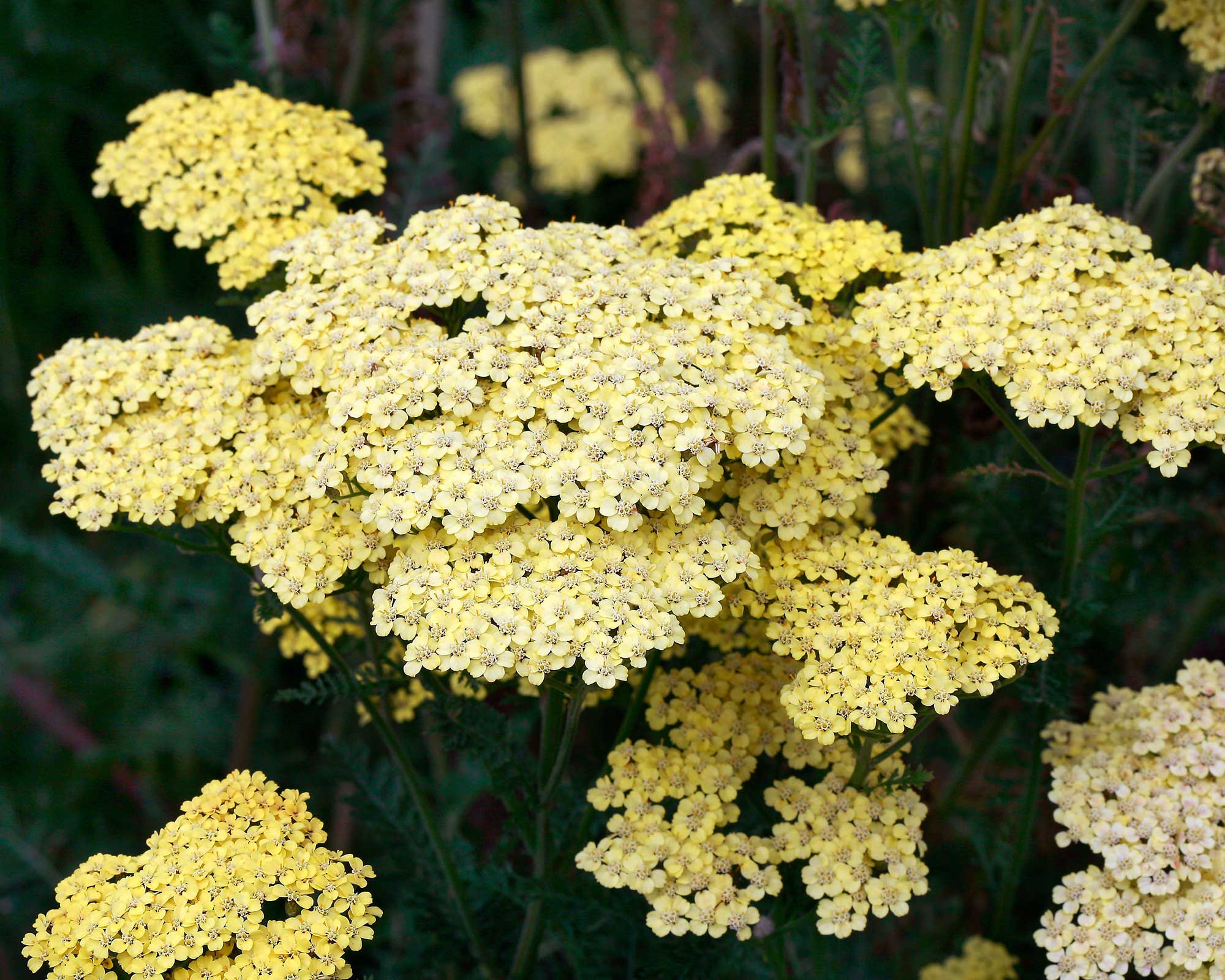
- Hardiness: USDA 3-8 (UK H7)
- Height: 3ft (90cm)
- Best for: wildlife
This is a fantastic, upright yarrow that forms blonde umbrellas of flowers above feathery silver-green foliage, from June to September.
If you're after plants for pollinators, this is a good one to add to your list. Try pairing with the purple and pink tones of Cirsium rivulare ‘Atropurpureum’, Scabiosa caucasica ‘Clive Greaves’, and Salvia ‘Nachtvlinder’ for a striking display.
It does best in well-drained, humus-rich soil in full sun. Deadhead the early flowers of this perennial, but leave the final flush to enjoy the architectural seedheads during autumn.
9. Olympian mullein
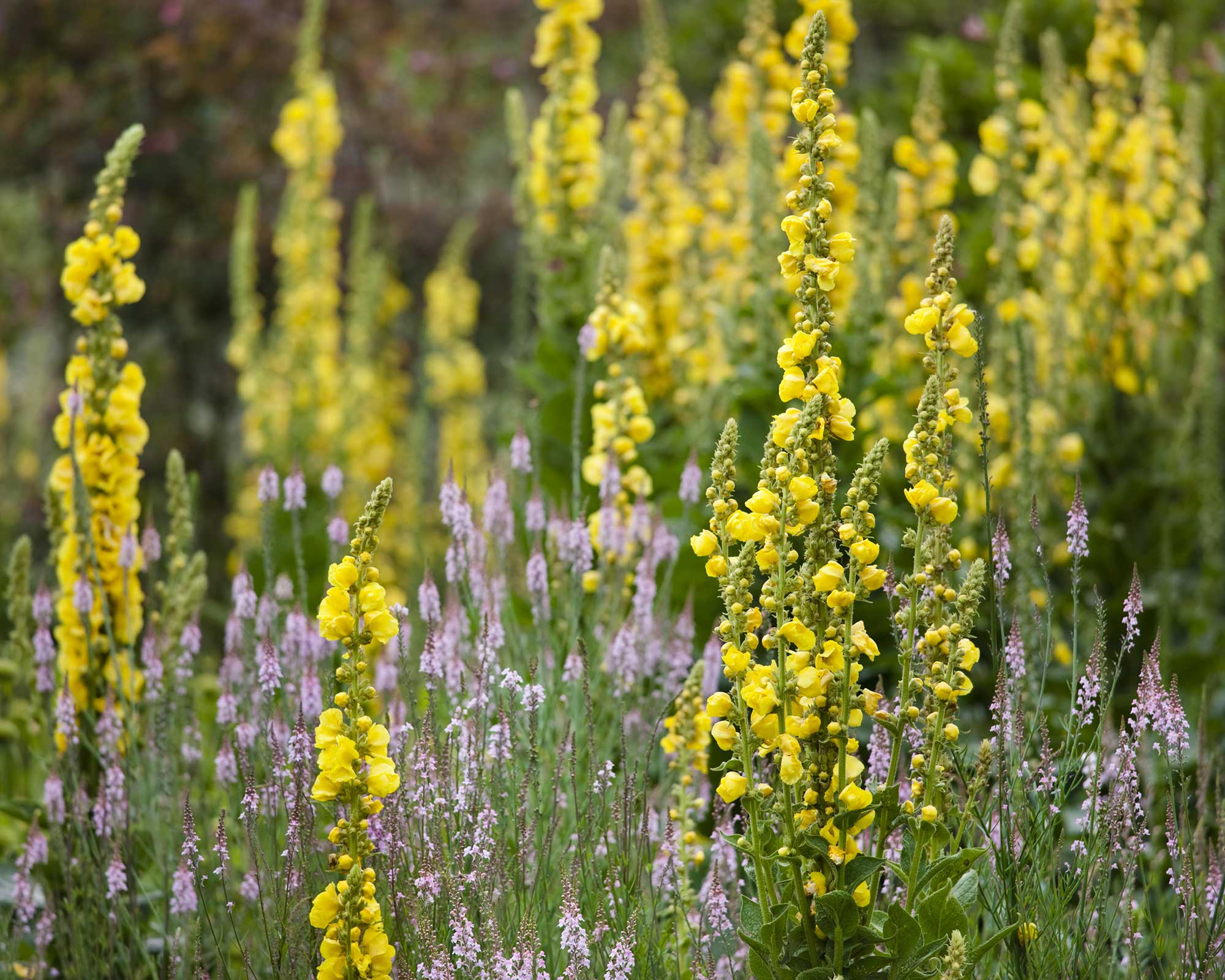
- Hardiness: USDA 5-8 (UK H6)
- Height: 6ft (1.8m)
- Best for: vertical accent
The Olympian mullein, also named Verbascum olympicum, is a great drought tolerant plant. It throws up candelabras of yellow flowers – visited by bees in July and August – from a large rosette of felty gray-green leaves.
It likes well-drained, neutral to alkaline soil in full sun. In fact, it's arguably better in poor soils, which will limit its size and prevent the need to stake it. This short-lived perennial will self-seed if not deadheaded.
Good planting partners are structural Stipa gigantea, Eryngium yuccifolium, and Phlomis tuberosa 'Amazone'.
10. Primula vulgaris
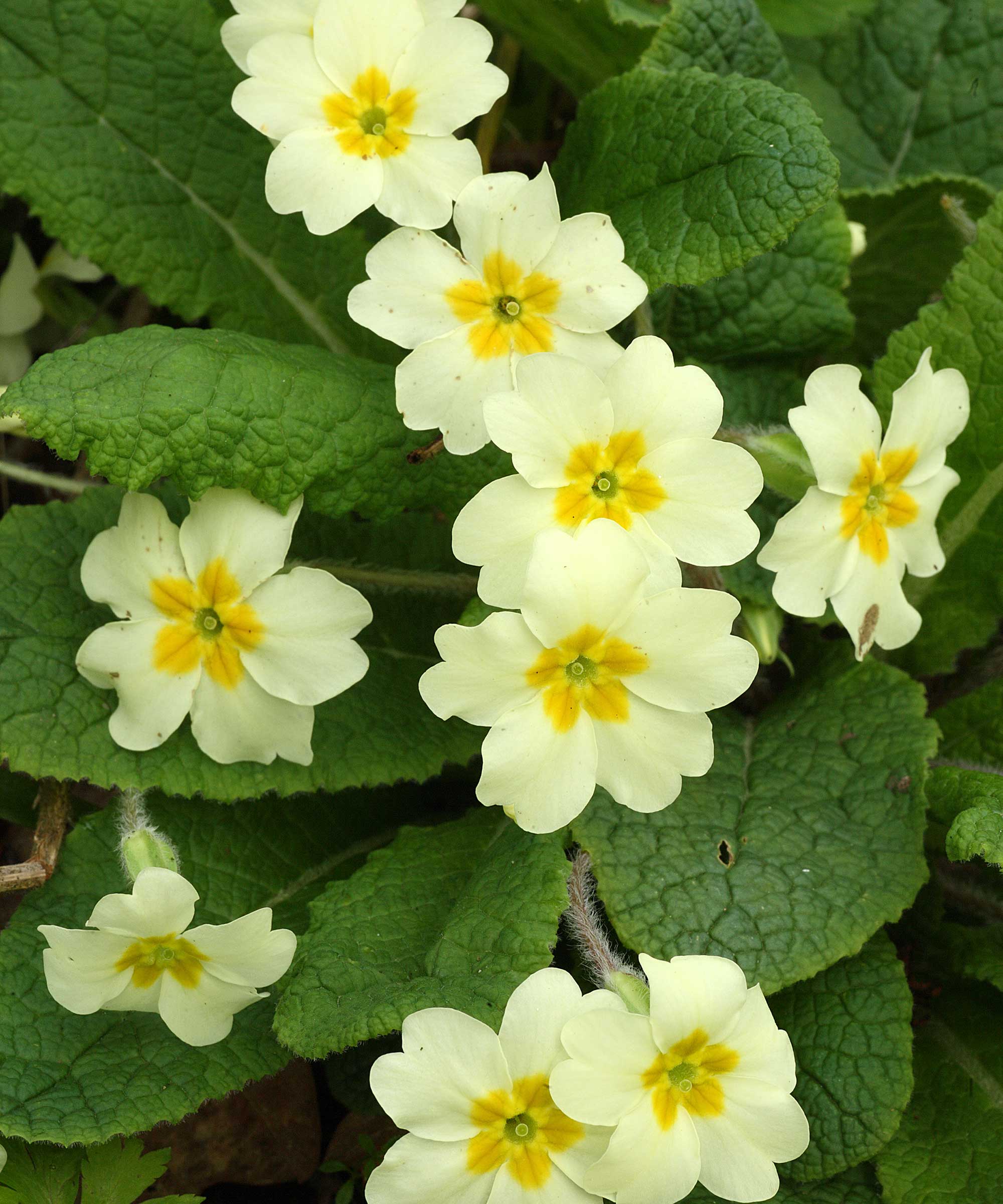
- Hardiness: USDA 4-8 (UK H7)
- Height: 4in (10cm)
- Best for: wildlife
A garden can never have enough primroses. They light up early spring with their pale yellow flowers and provide pollinators with nectar into May.
Plant them in moisture-retentive, well-drained soil in sheltered semi-shade. They will naturalize over time, in grass or borders, and this can be aided by dividing and replanting them after flowering.
They look lovely alongside other spring flowering plants, such as Anemone nemorosa 'Robinsoniana' and Narcissus 'Hawera'.
11. Canna 'Richard Wallace'
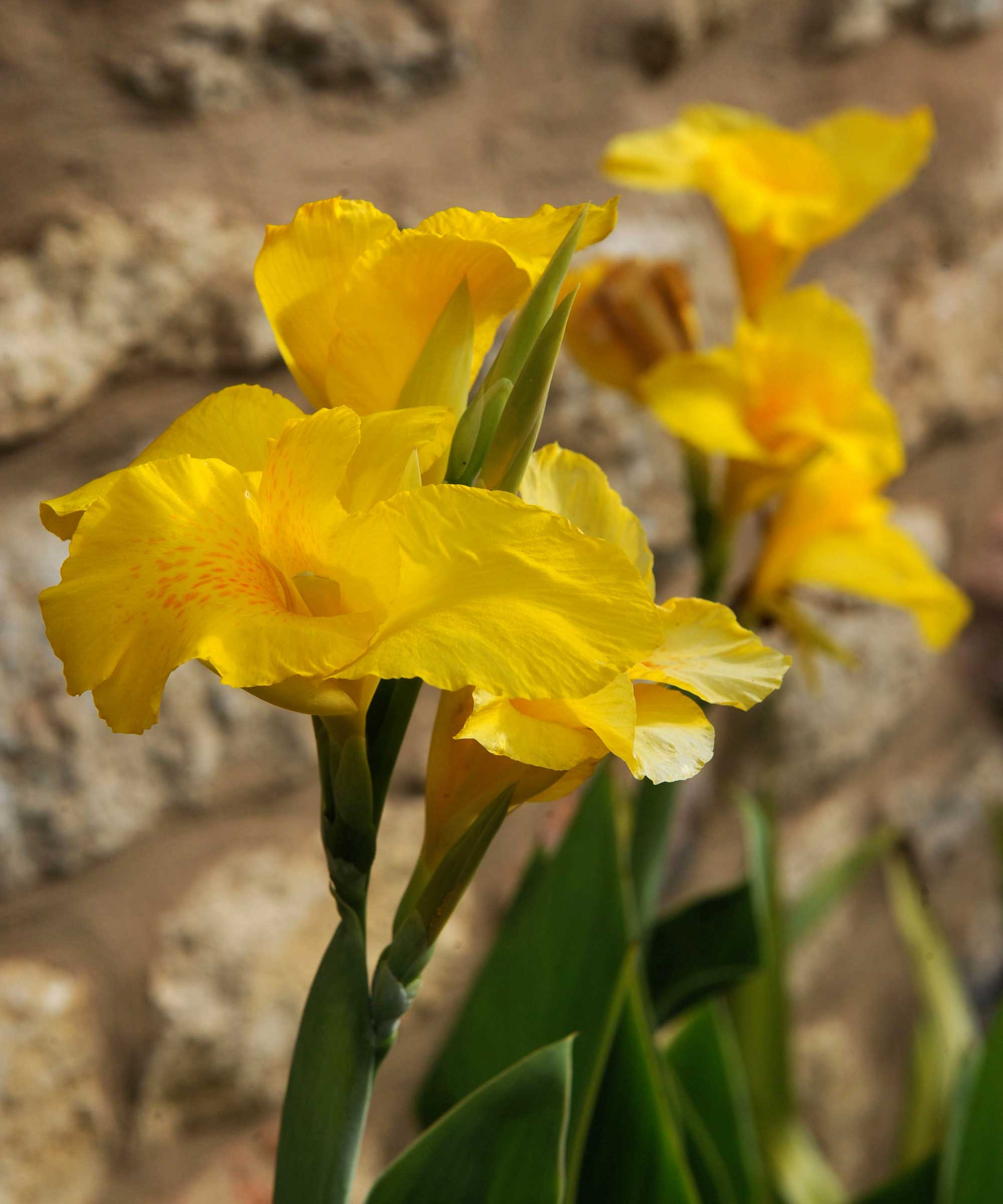
- Hardiness: USDA 7-10 (UK H3)
- Height: 5ft (1.5m)
- Best for: back of border
The petals of this plant are like clear, butter-yellow flames, speckled with orange, above lush apple-green leaves. Flowering in late summer and early autumn, they're a surefire way to create an exotic feel in your garden.
In cold climates, plant these in early summer after risk of frost has passed, and lift the rhizomes to store over winter. They thrive in moisture-retentive, well-drained soil in sheltered, full sun.
Plant alongside other fiery favorites, such as 'Bishop of Canterbury' dahlia and Kniphofia 'Nobilis'. Miscanthus sinensis ‘Zebrinus’ will add appealing structure and form to the mix. It's an ideal combination for a hot-hued garden color scheme.
12. Crocosmia 'Paul's Best Yellow'

- Hardiness: USDA 5-9 (UK H4)
- Height: 2.5ft (75cm)
- Best for: front of border
This beauty has sprays of sun-yellow flowers that – unlike a lot of montbretia – face outwards, with green sword foliage. It will bloom from July to September.
Lift and divide these plants every few years: congested clumps of corms hamper flowering. And when it comes to soil types, this one likes a spot that is well-drained and humus-rich, in sun or semi-shade.
Good plant pairings include Stipa tenuissima, the vivid purple Geranium 'Ann Folkard', and Allium sphaerocephalon.
13. Kniphofia 'Bees' Lemon'
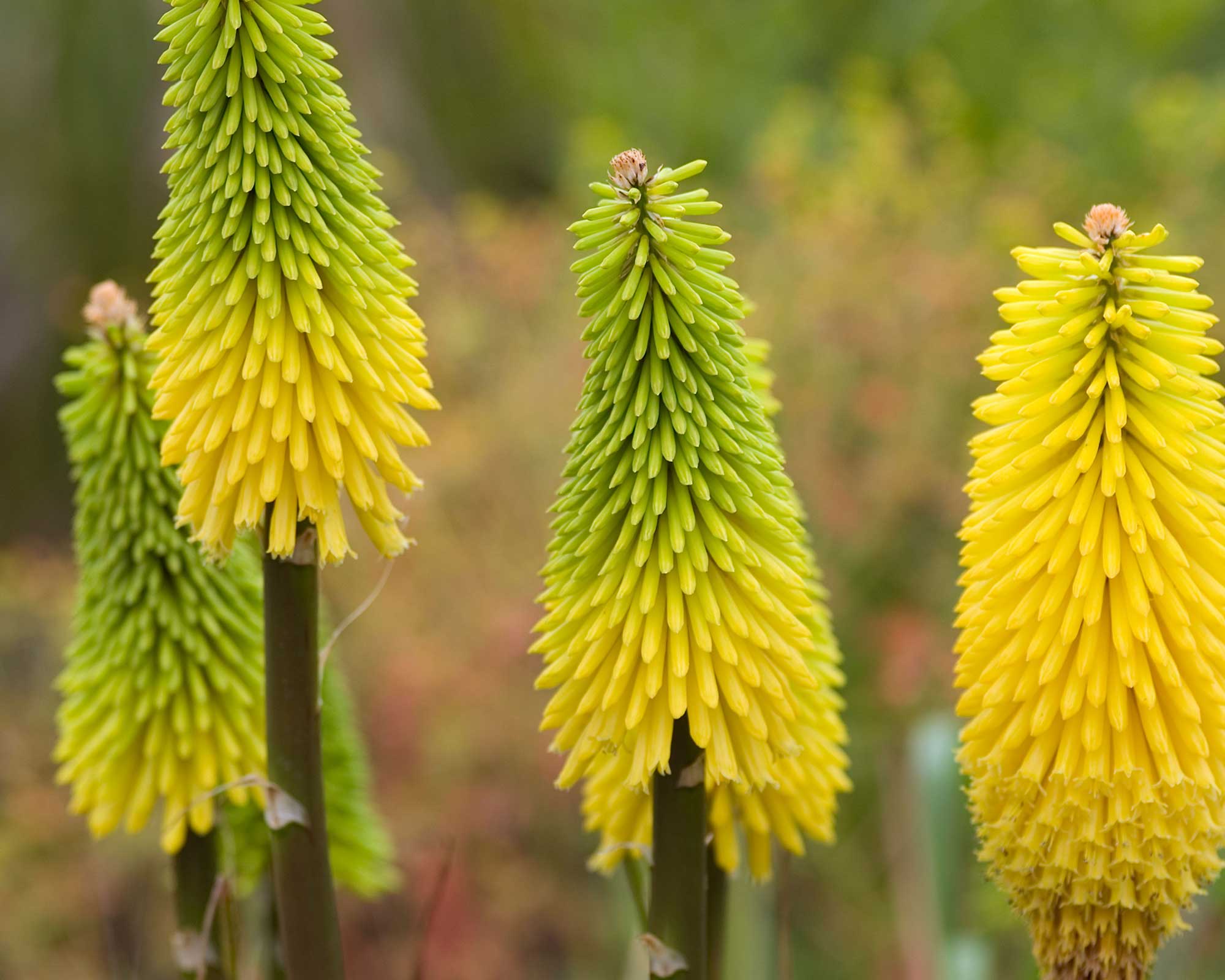
- Hardiness: USDA 5-9 (UK H5)
- Height: 3ft (90cm)
- Best for: vertical accent
'Bee's Lemon' is a superb red-hot poker with yellow torches from lime buds above grass-like foliage. A great pick for brightening up your borders in late summer.
This plant likes moisture-retentive, well-drained, neutral to acid soil and lots of sunshine. It is especially fond of enriched sandy soil and is tolerant of exposed sites. Apply dry mulch to the crown in autumn.
It looks particularly fabulous alongside Sanguisorba tenuifolia var. alba, Monarda 'Beauty of Cobham', and Molinia caerulea subsp. arundinacea 'Skyracer'.
14. Digitalis lutea

- Hardiness: USDA 3-8 (UK H6)
- Height: 3ft (90cm)
- Best for: vertical accent
Foxgloves are easily one of the best cottage garden plants. This variety has slender spires of small yellow-cream flowers and shiny green leaves. Digitalis grandiflora is a more traditional version with larger yellow flowers.
They are happiest in alkaline soil in semi-shade, but will tolerate most situations as long as the soil is humus-rich and well-drained.
Plant alongside Nepeta nuda 'Romany Dusk', the delicate pink Chaerophyllum hirsutum 'Roseum', and Campanula persicifolia for a romantic and whimsical scheme.
15. Geum 'Lady Stratheden'
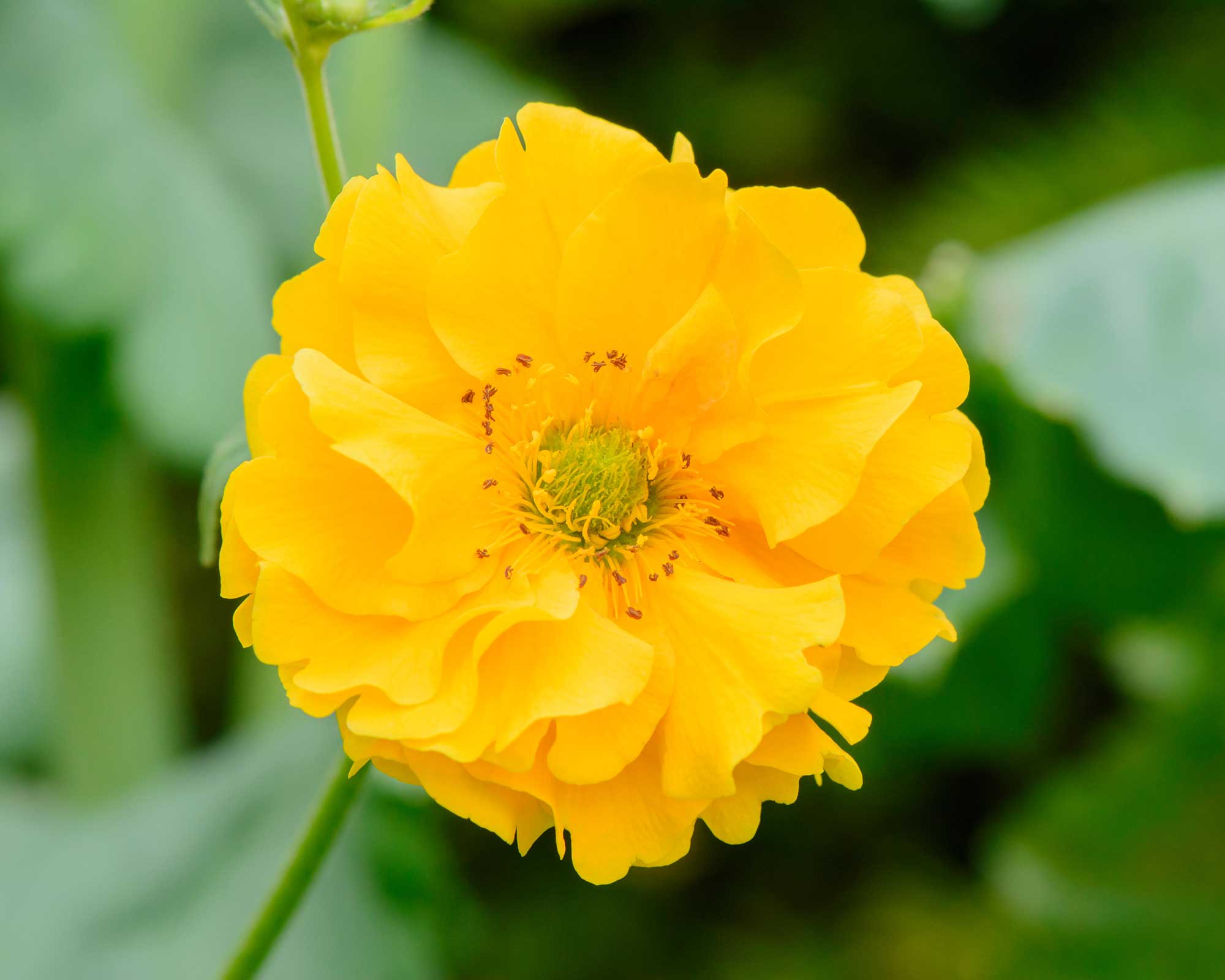
- Hardiness: USDA 5-7 (UK H7)
- Height: 2ft (60cm)
- Best for: front of border
This reliable perennial produces bright-yellow blooms atop thin stems from May to August, above hairy dark-green leaves. It's a very good bee-friendly plant.
Plant this one in moisture-retentive, well-drained soil in sun or semi-shade. Deadhead and cut back spent stems to encourage more flowers, and lift and divide it every few years in autumn.
Carex testacea, Aquilegia chrysantha 'Yellow Queen', and Knautia macedonica all make excellent planting companions.
16. Echinacea 'Harvest Moon'
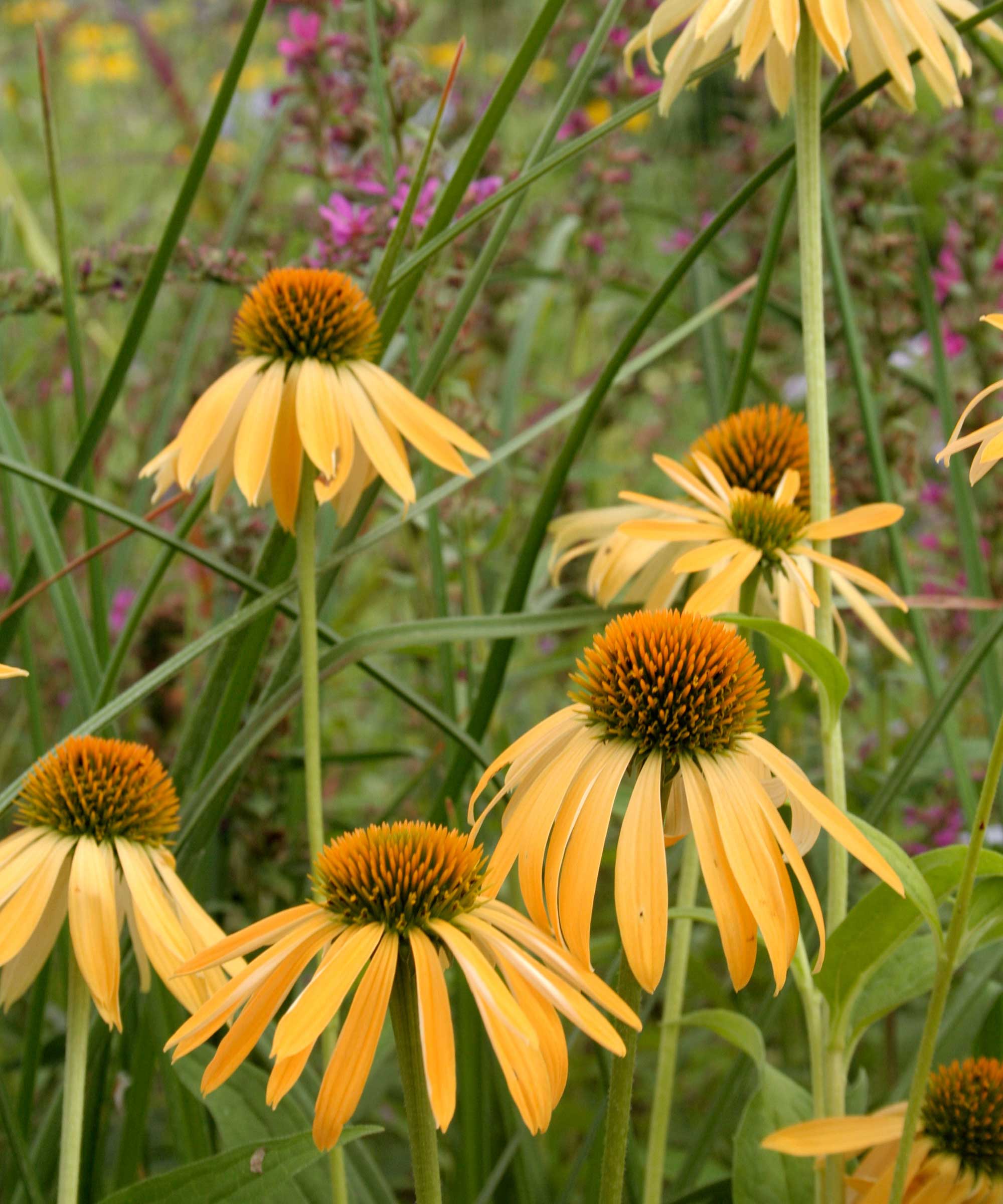
- Hardiness: USDA 3-8 (UK H5)
- Height: 2.5ft (75cm)
- Best for: wildlife
This structural plant has large, fragrant, amber-gold flowers that attract butterflies from June to September. It is part of the 'Big Sky Series', which also includes the attractive lemon 'Sunrise' cultivar. Leaving the seedheads once the blooms are over will provide autumn interest.
Plant it in deep, humus-rich, well-drained soil in full sun and mulch annually. Lift and divide in autumn or spring, when necessary. You can learn more about how to grow echinaceas with our dedicated guide.
Crocosmia 'Hellfire', Sanguisorba hakusanensis, and Anemanthele lessoniana will all look gorgeous alongside.
How can you use yellow in a border?
There are a few ways to bring yellow flowers into a border.
If you want to go all out and create an entirely yellow scheme, select every shade of yellow possible: from cream to blazing pineapple yellow. Employ the golden and green tones of grasses and other foliage plants, then add whites, creams, and silvers as pretty accents.
To add yellow to an existing border that contains various colors, do what you can to stop it from dominating the scene. It won't fight for attention amongst other brights (such as magenta, tangerine, and scarlet), or it can be toned down with the help of complementary colors, such as blue or green. The easiest yellows to introduce are subtle primrose shades, such as Achillea 'Credo'.
There are enough yellow flowers to brighten up a border all year round. There is a wide range that will light up summer and autumn displays. And then, when winter comes along, you can maintain the cheering show by adding evergold foliage plants (for instance, Pinus mugo 'Carsten' and Libertia ixioides 'Goldfinger’). In spring, there are plenty of early golden gems – think primroses, Welsh poppies, daffodils, yellow types of tulips, and cushion spurge.
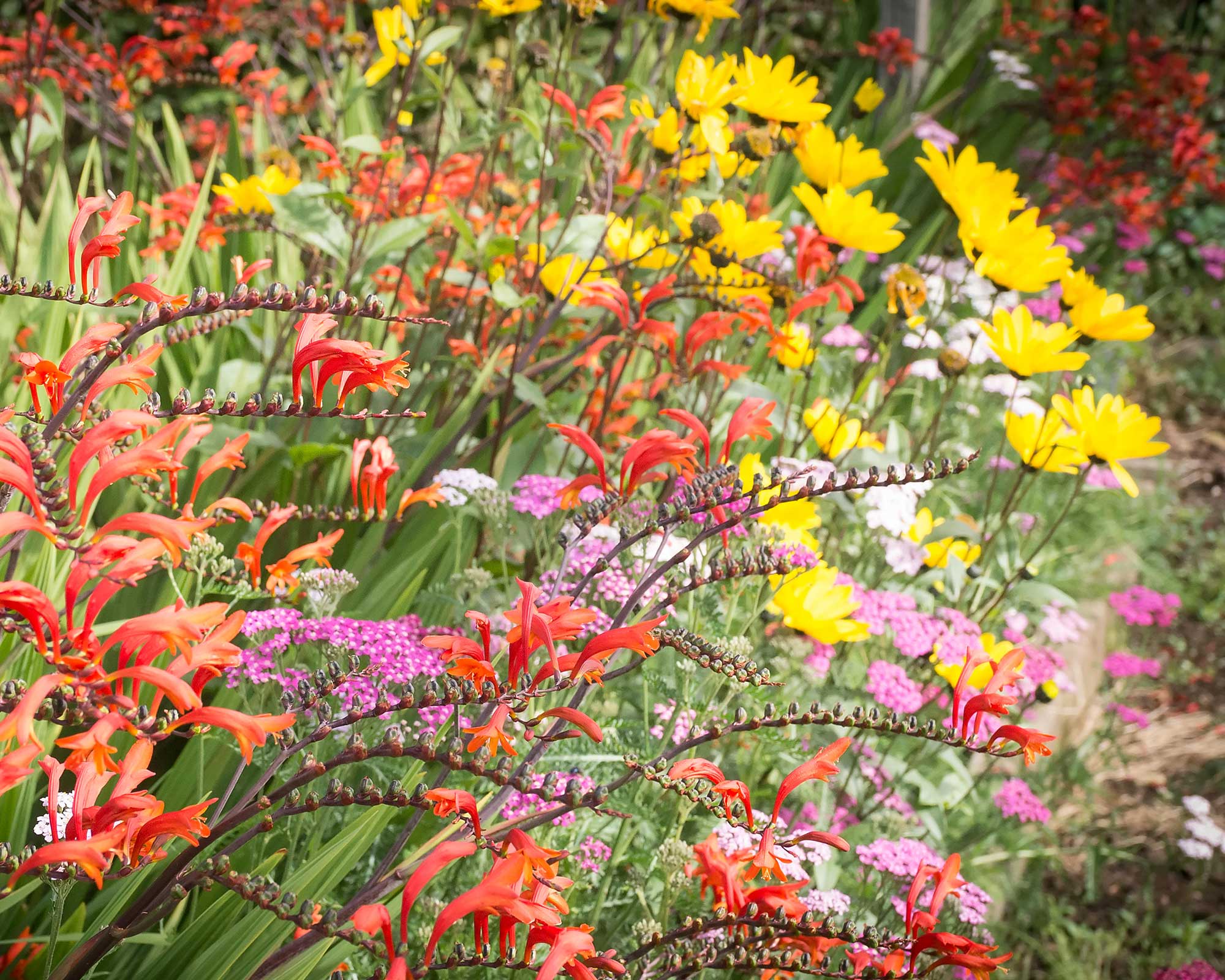
What other colors go with yellow flowers?
- Purple: The traditional partner color for yellow plants is purple. Think sun-yellow Achillea 'Moonshine' alongside regal-purple Salvia nemorosa 'Caradonna', for instance. Claret tones also work well.
- Pink: Gardeners Beth Chatto and Christopher Lloyd both combined pink and yellow. In the garden at Great Dixter, England, Lloyd was fond of Helianthus 'Lemon Queen' with pink Japanese anemones.
- Blue: Pastel and metallic blues (such as echinops) work well with all intensities of yellow.
- White: Another solar color, white flowers (as well as ivory) are very effective alongside yellow.
- Green: Next to yellow in the color spectrum, lime and green flowers (such as Alchemilla mollis) are the perfect partners, preventing yellow from dominating.
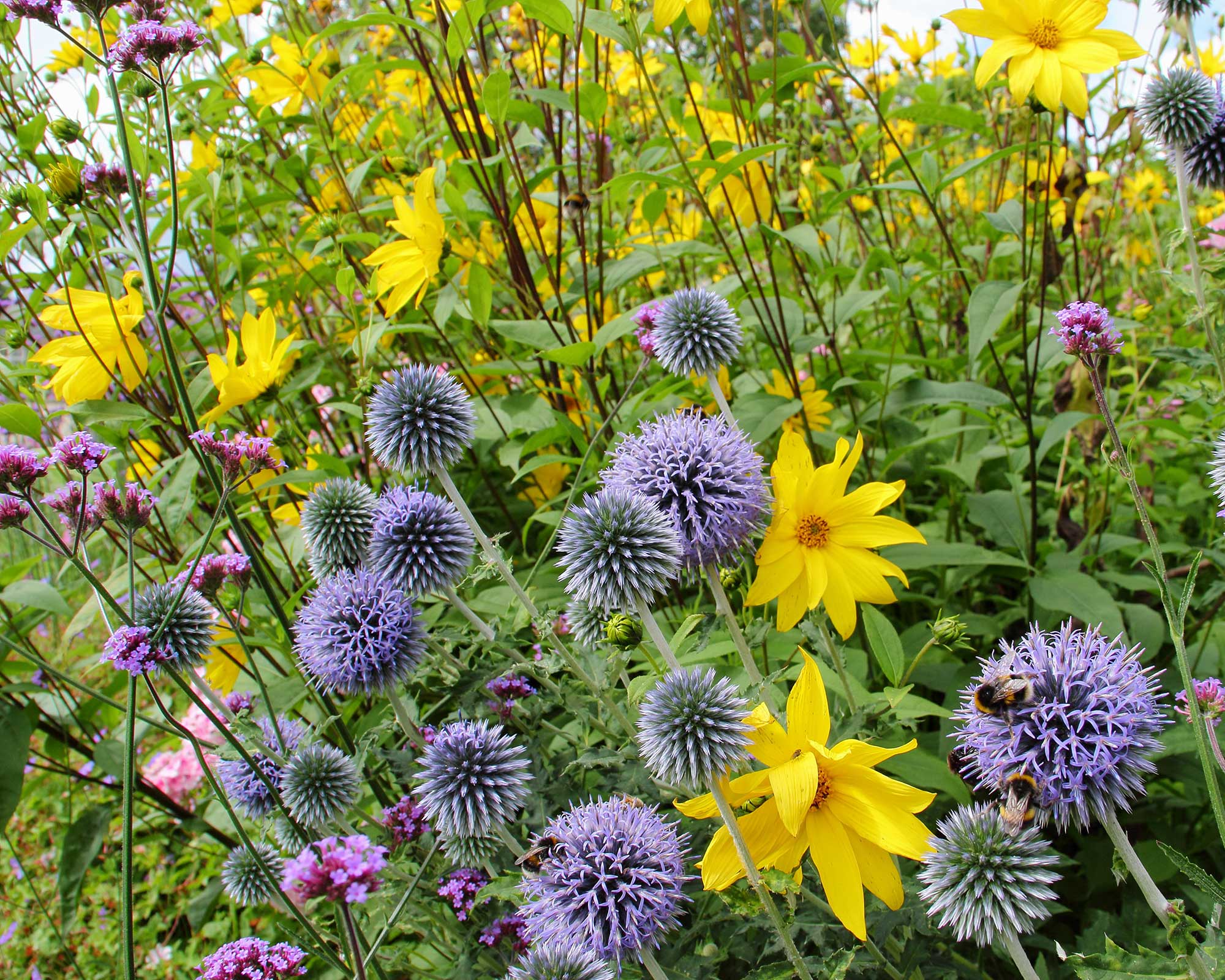
Where should you put yellow plants?
Yellow is the color most visibly seen from a distance (which is why it's the color of New York taxicabs). So, scorching bold yellow is arguably best used near the house because when planted at the far end of a small garden, it will appear to shrink the space.
Pale yellows can be planted anywhere and are especially beautiful around an outdoor seating area used on summer evenings because they glow.

The garden was always a big part of Holly's life growing up, as was the surrounding New Forest where she lived. Her appreciation for the great outdoors has only grown since then. She's been an allotment keeper, a professional gardener, and a botanical illustrator – plants are her passion.
